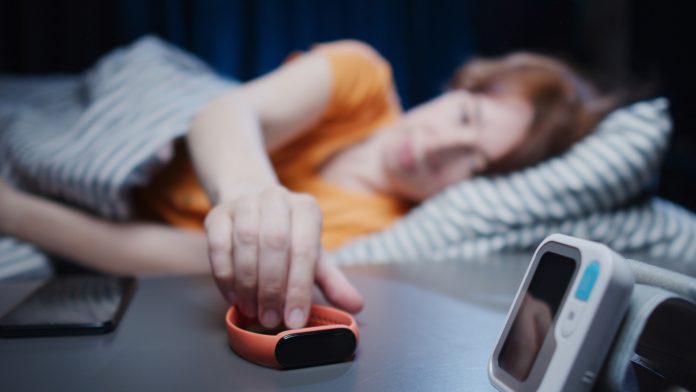
A research team from the American College of Cardiology has developed a smartwatch app to detect AFib, with high levels of accuracy.
Atrial fibrillation (AFib) was confirmed in nearly 94% of people who were initially identified to have signs of the heart rhythm disorder by a smartwatch app to detect AFib, and who followed up with a clinician, in a study presented at the American College of Cardiology’s 71st Annual Scientific Session.
The study was funded by the National Natural Science Foundation of China.
How did scientists conduct this study?
The study included 2.8 million participants, thus making it the largest study to date to demonstrate how wearable consumer technologies —such as this app to detect AFib — can be utilised to investigate heart problems during everyday activities.
Researchers also utilised the app to screen a subset of participants for obstructive sleep apnoea and discovered that those indicated for possible sleep apnoea were 1.5 times more likely to have AFib than those who were not. Therefore, this implies that tools suitable for detecting the two conditions can work cooperatively to enhance health monitoring even further.
“Digital technologies make it possible to increase general awareness about AFib and its risk factors as well as to improve prevention of AFib and its complications,” explained Yutao Guo, MD, lead author, Professor of Internal Medicine at Chinese PLA Medical School, and Chinese PLA General Hospital in Beijing.
“With the global surge of wearable technology for AFib screening, especially in the challenging setting of the COVID-19 pandemic, the present study provides a possible solution to help people identify possible signs of AFib and get diagnosed and treated earlier.”
What is AFib?
AFib is the most common type of heart rhythm disorder, with symptoms including a rapid or irregular heartbeat along with episodes of light-headedness, chest pain, and shortness of breath. People with AFib are approximately five times more likely to suffer a stroke when compared to the general population because an erratic heartbeat can cause blood to pool and clot. However, this risk can be lowered with early diagnosis and treatment.
What did this app to detect AFib reveal regarding the condition?
The study, conducted in China, combined data from smart devices with clinical data to examine the accuracy of AFib screening. This was done by utilising photoplethysmography, which is a light-based method to monitor blood flow used in many wearable devices.
Researchers tracked more than 2.8 million people who downloaded an AFib screening app on a compatible Huawei smart device (a consumer electronics brand popular in China). Utilising photoplethysmography to monitor the wearer’s pulse and the app meant that an algorithm could be applied to detect when the heart’s rhythm was abnormal. If an abnormal rhythm was detected, the wearer would be contacted by a clinician to set up an appointment for a clinical assessment.
Over four years (2018-2021), 12,244 users received a notification of suspected AFib. 5,227 of those people chose to follow up with a clinician, and AFib was confirmed in approximately 93.8% of patients. This diagnosis was reached using standard AFib diagnostic tools, including clinical evaluation, an electrocardiogram, and 24-hour Holter monitoring, which is where someone wears a device to track heart activity while they go about their usual activities, including sleeping.
What additional benefits derive from this technology?
Additionally, photoplethysmography can also be employed to detect physiological changes that occur when a person has obstructive sleep apnoea, a condition that disrupts breathing during sleep.
Previous studies have suggested that about half of people with AFib also have sleep apnoea. Thus, in this study, 961,931 of the app users tested for AFib were also screened for signs of sleep apnoea. Of these, about 18,000 were notified that they may have the condition. Results also showed a high rate of AFib diagnosis among this group, with 1.5-fold higher odds of receiving an AFib diagnosis among those who were flagged for sleep apnoea compared to those who were not.
“This consumer-led AFib screening approach highlights the increased risk for detecting prevalent AFib episodes over time and the need for modification of obstructive sleep apnoea and other risk factors that increase AFib susceptibility,” noted Guo. “Future studies will be needed to move toward using ‘smart’ technology to help manage AFib and the risk factors that increase AFib susceptibility, as well as to evaluate attitudes and concerns related to this digital health tool.”
What limitations were noted in this study?
While this study employed Huawei devices, more common devices in the Apple Watch or FitBit have similar photoplethysmography technology that can be utilised to measure a person’s pulse and detect abnormalities.
Additionally, another limitation of the study is that only 53.3% of those who received a notification of suspected AFib followed up with a clinician for further evaluation. Thus, researchers were unable to verify whether the remaining individuals had clinically confirmed AFib or determine why they did not follow up for a health assessment.
























